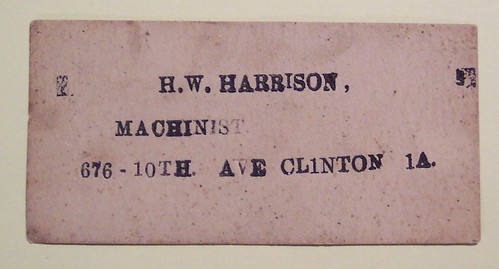There is a vast amount of content out there that already exists, but is barricaded behind forms -- whether physical items like books or intellectual concepts like genres -- that prevent it from reaching its natural audiences. Exposure to a larger audience is always a win-win situation: more readers, more reading experiences, and an exponential increase in contacts to even more audiences. That isn't just more entertainment value or more revenue: there's an obvious gain to society when more people are exposed to more ideas: those ideas can be put to better use, often in ways not imagined by the original authors. As the exhaustive discussion about long tails and fragmented markets has shown, we've already seen tremendous progress in bringing content to previously unrealized audiences. But to some extent the physical forms and intellectual conception of cultural items like "the book" and "the film" remain obstacles. The weekend visitor to Yosemite might love to hear what Theodore Roosevelt had to say about Half Dome, but doesn't necessary want to read through (still less carry) his diaries alongside essential camping gear. Why not direct them straight to the paragraphs that matter to them?
There is, of course, a lot of institutional resistance to breaking down these units and releasing this content, which would essentially to allow readers to make use of it in whatever ways they can imagine. Some of these forces are legal (copyright); some are economic: what business model would continue to allow the production of value that the publishing industry is currently structured around? Some forces are more purely conceptual: what is the role of the author? Where does the involvement of the author -- their original idea, their intent, their control of presentation, their control of interpretation -- end? Where, for that matter, does it begin?
But there are tremendous countervailing forces -- namely the interpretative processes that readers already employ while consuming content. Readers, listeners, and viewers already associate the content they experience with memories, relationships, and other pieces of content. In the past these have been primarily personal associations. They have been communal only in the narrow set of situations that technology allowed: discussions among friends, within book clubs, and so forth. But they have been there, obscured somewhat by the fact that they left no physical mark upon the transmitter of the content (although many of us treasure a particular edition of a book because of the emotional associations that it carries: who gave it to us; what we were doing while we were reading it). As more than a few participants in the BookCamp conversations pointed out, some of the most meaningful "reading" experiences we have had were due to the conversations that they provoked with colleagues and friends, or the access to memories that they allowed.
All this, now, is possible to a degree and in methods hitherto unimaginable. You can already see it taking place. Set up a Twitter search for the title of your favourite novel and you will see, in realtime, the ways in which it is slotting itself into other people's lives. In doing so it is enriching those new readers and (since it is happening in ways so different from your own experiences) actually enriching the book itself as an amalgamation -- a touchstone -- of collective experience. For the first time, books are visible not just for what they contain but for what they release.
And users, given the tools, will enable, organize, and share that universe of possibilities.
3. A World of Associations
So what could that look like?
Suppose that users could geotag passages of text, works of art and design, pieces of music, audio clips, moments of film. This would allow you to engage in tours of cities, landscapes, and parks with a variety of contextually relevant materials (further reading, illustrations, maps; music and artwork inspired by these locations). Art galleries and museums would not only be augmented by those now ubiquitous curated audio materials, but by user-generated recommendations and commentary on what to see, how to look at it, and what music and writing has been inspired by or associated with it. As these user-generated elements age, they become instant historical tours, sitting alongside (for example) the impressions of Samuel Pepys, Thomas de Quincey, and Charles Dickens to enrich your experience of Oxford Street or Charring Cross Road.
There are obvious business applications -- the links to real-world and online goods and services, where you could purchase a poster of that William Turner painting, that reproduction of Harry Beck's first underground map, or a copy of the Dickens novel that you where just listening to an excerpt from.



